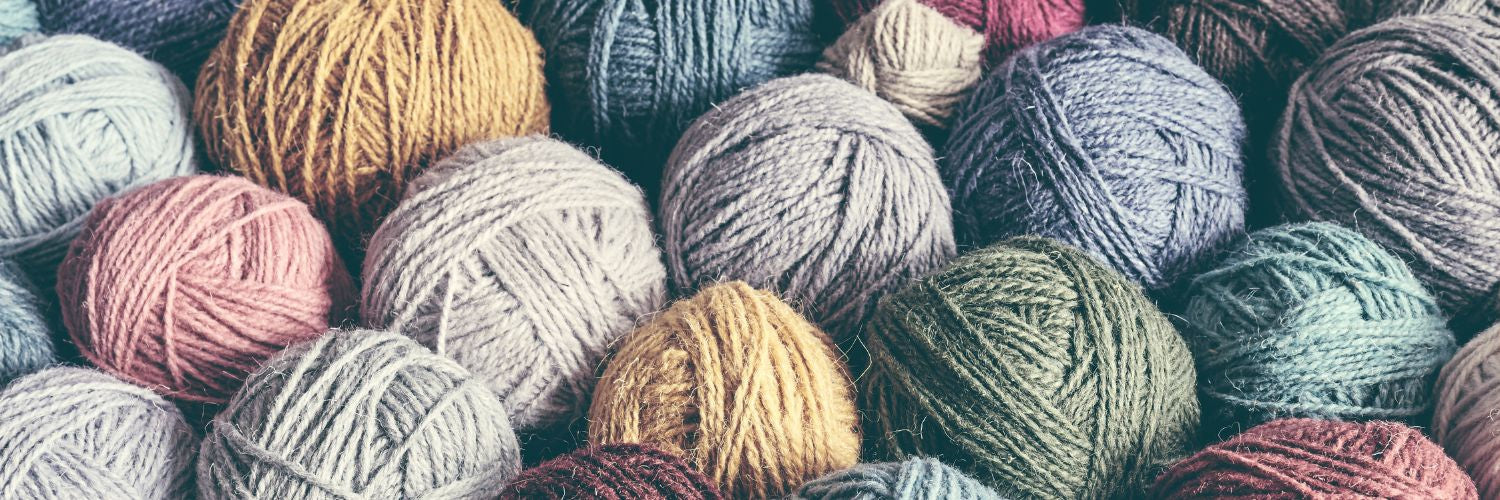
Understanding Yarn Weights - Why they are so important...
Yarn weight refers to the thickness of a particular yarn. It is measured in wraps per inch (WPI) or by its international number system which ranges from 0 (lace yarn) all the way up to 7 (jumbo yarn). Different weights of yarn have their own sets of advantages and disadvantages, so it’s important to understand how each type of yarn can be used effectively.
What Determines the Weight of Yarn?
A yarn’s weight is determined by measuring the diameter – or the thickness – of a strand of yarn. The most common way to measure a strand’s diameter is with a method called wraps per inch, or WPI.
WPI is exactly what it sounds like – take a strand of yarn and wrap it around a ruler until one inch is covered. The number of times that the yarn wraps around in one inch is the WPI.
For example, if your yarn wraps around the ruler ten times in one inch, then your yarn has a WPI of 10.
Yarn Weight Categories
To help crafters select the right yarns for their projects, the Craft Yarn Council has set up a system of guidelines that yarn manufacturers use to categorize their yarn.
The CYC standard yarn weight system has seven different categories, numbered from 0 to 7. The lower numbers indicate lighter-weight yarns, while the higher numbers indicate heavier-weight yarns.
CYC Yarn Weight Standards
Here are the categories and the types of yarn in each category as indicated by the CYC (Craft Yarn Council).
Lace Weight - 0
Lace weight yarn is the thinnest available and is most often used for intricate patterns like lace shawls and doilies, as well as lightweight clothing items. Because it's so thin, lace weight takes longer to work up than other types of yarn but offers a delicate look when complete.
Super Fine - 1
Next comes fingering/sock weight yarn, which is slightly thicker than lace and has a nice sheen to it. This type of yarn is most often used in the creation of lightweight garments such as baby clothing, shawls, and socks. Fingering/sock weight yarn can also be used for intricate patterns like cables and lace.
Fine - 2
Fine weight yarns are also known as sport weight yarns. They’re slightly heavier than super fine weight yarns, and are typically used for projects such as sweaters, hats, and other lightweight clothing items.
Light - 3
Light weight yarns are also known as DK weight or double knitting yarns. Double Knit Yarns are slightly heavier than fine weight yarns, and are typically used for projects such as sweaters, hats, scarves, and baby clothes.
Medium - 4
Medium-weight yarns are also known as worsted weight yarns or aran yarns. They’re slightly heavier than lightweight yarns, and are typically used for projects such as afghans, sweaters, and hats. I often think of worsted weight yarns as “all-purpose” yarns, since you can use them for so many different types of projects.
Bulky - 5
Bulky weight yarns are also known as chunky weight yarns. They’re heavier than worsted weight yarns and are typically used for projects such as sweaters, hats, scarves, and blankets.
Super Bulky - 6
Super bulky weight yarns are some of the heaviest yarns, and are typically used for projects such as hats, scarves, and blankets. It’s easy to learn how to knit with super bulky weight yarns, since it’s so easy to see the individual stitches.
Jumbo - 7
Jumbo weight yarns are the heaviest weight of yarns, and are typically used for projects such as accessories and home decor projects, like blankets. These types of yarns are also used for arm-knitting projects.
Yarn Weight Symbol Chart
In addition to the names given to each category, the Craft Yarn Councils has designed a set of symbols to indicate the weight of yarn. These symbols can be found on the yarn labels of some commercially available yarns.
The following chart shows the seven different CYC yarn weight categories, along with their corresponding names, WPI, gauge, suggested needle and crochet hook sizes, and symbols.


